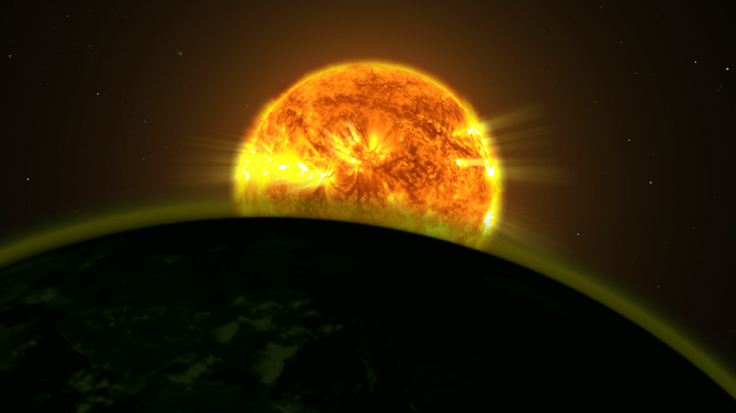Calling ET: Nasa finds a way to boost its search for alien worlds supporting extraterrestrial life
New research will help astronomers narrow down the most promising candidates in the search for habitable planets.
The search for alien life is set to be streamlined, helping astronomers narrow down potential candidates of alien worlds suspected to possibly support life, thanks to new research from Nasa. Scientists used a model that "realistically simulated atmospheric conditions" that would be required to support extraterrestrial life. The model aided the discovery of a completely new process that can boost the search for alien planets supporting life.
"Using a model that more realistically simulates atmospheric conditions, we discovered a new process that controls the habitability of exoplanets and that will guide us in identifying candidates for further study," Yuka Fujii of Nasa's Goddard Institute for Space Studies (GISS) and the Earth-Life Science Institute at the Tokyo Institute of Technology, who is also the lead author of the research paper, said in a statement.
Unlike previous atmospheric simulation one-dimensional models, the new research, which has been published in The Astrophysical Journal, used a model that calculated the conditions in all three dimensions. The three-dimensional model allowed scientists to simulate the circulation of the atmosphere and highlight unique features of the circulation.
What would an alien planet need to support life?
According to Nasa, liquid water is "necessary for life as we know it". To be considered habitable, an alien planet, for instance an exoplanet, would have to have a temperature that would allow liquid water to have existed on the planet's surface for roughly billions of years – enough time for life to have thrived.
However, the exoplanet's distance from its parent star can help determine if it could be habitable. For instance, if the exoplanet is too far away from its parent star, it would be too cold, freezing the planet's oceans. Alternatively, if the exoplanet is too close, the intense light from the parent star would eventually cause the oceans to evaporate and be lost to space.
"This happens when water vapour rises to a layer in the upper atmosphere called the stratosphere and gets broken into its elemental components (hydrogen and oxygen) by ultraviolet light from the star. The extremely light hydrogen atoms can then escape to space. Planets in the process of losing their oceans this way are said to have entered a "moist greenhouse" state because of their humid stratospheres," Nasa said.
"We found an important role for the type of radiation a star emits and the effect it has on the atmospheric circulation of an exoplanet in making the moist greenhouse state," said Fujii. In case of exoplanets orbiting close to their parent stars, the power of the star's gravity will slow the planet's rotation, which in turn could lead to the planet becoming tidally locked. This is essentially when one side of the exoplanet will always face the star, giving that region constant daylight and the other region will always be away from the star, in a state of eternal night.
Such a scenario could lead to the cloud on the planet's day-side to act as an umbrella, keeping the planet cool and preventing water vapour from rising. The scientists found the NIR (near-infrared radiation), which is a type of light invisible to the human eye, that comes from a star could "provide the heat needed to cause a planet to enter the moist greenhouse state".

The new model showed that since these parent stars emit the bulk of their light at NIR wavelengths, this could result in a moist greenhouse state providing conditions similar or even warmer than those experienced in the Earth's tropics.
"For exoplanets closer to their stars, the team found that the NIR-driven process increased moisture in the stratosphere gradually. So, it's possible, contrary to old model predictions, that an exoplanet closer to its parent star could remain habitable," Nasa said.
"As long as we know the temperature of the star, we can estimate whether planets close to their stars have the potential to be in the moist greenhouse state," said Anthony Del Genio of GISS, a co-author of the paper. "Current technology will be pushed to the limit to detect small amounts of water vapour in an exoplanet's atmosphere. If there is enough water to be detected, it probably means that planet is in the moist greenhouse state."
The new study is based on scientists' assumptions of an Earth-like planet, but one covered in oceans. The assumptions allowed researchers to determine how variations in orbital distance and type of stellar radiation could affect the amount of water vapour in the atmosphere.
The team plans on modifying planetary characteristics such as size, gravity, atmospheric composition and surface pressure to see how they affect the circulation of water vapour and habitability, thereby helping narrow down the search for alien life.






















